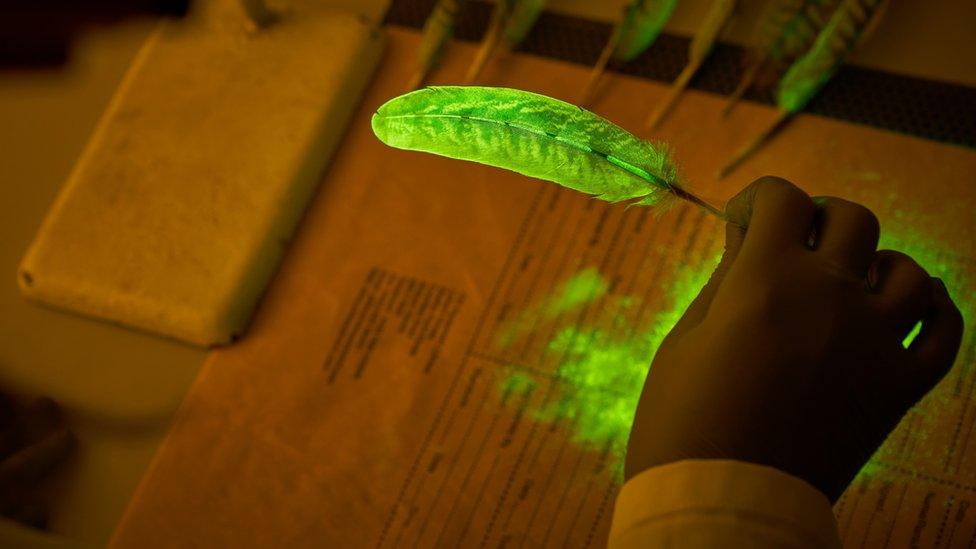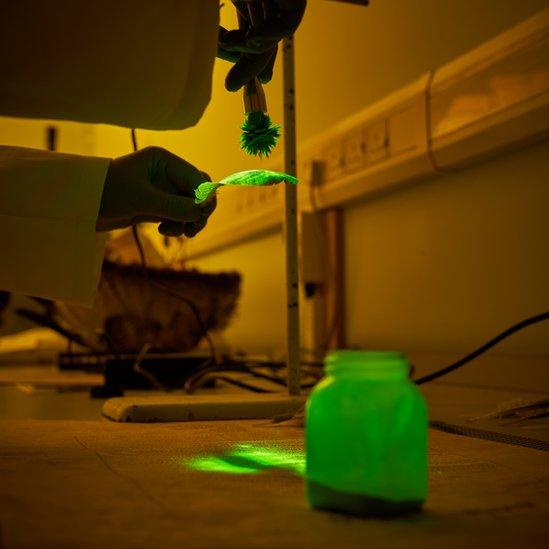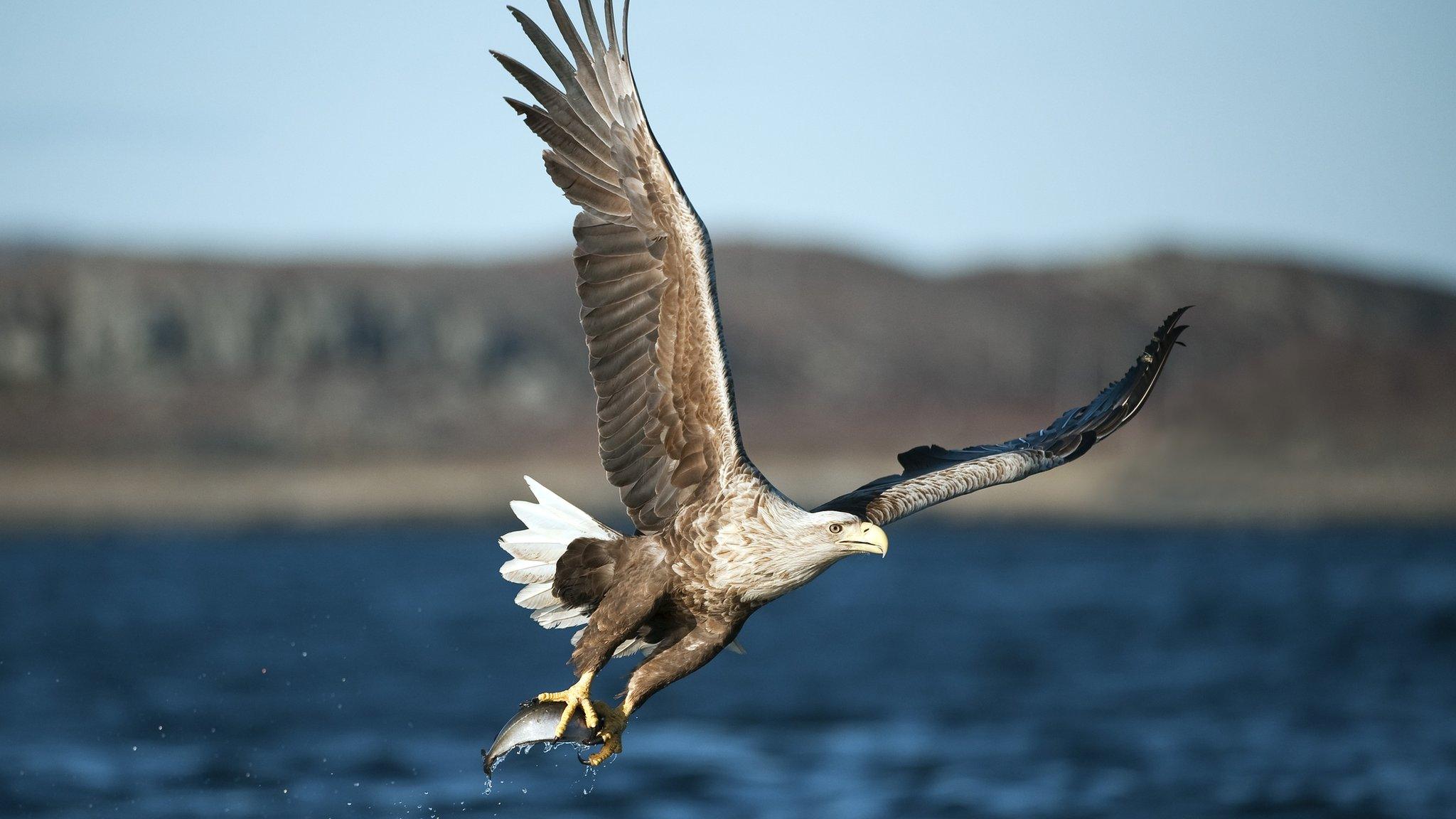Dundee scientists claim wildlife crime breakthrough
- Published

The research was carried out by Abertay University
Scientists say they have been able to recover fingerprints from bird feathers that have been exposed to wind and rain for the first time.
The development could offer a new tool in the fight against wildlife crime.
Researchers at Dundee's Abertay University had previously been able to take fingerprints from feathers under laboratory conditions.
In the new study, they were able to obtain prints from feathers left outdoors for up to 21 days.
Wind and rain cause a deterioration of the pattern of fingerprints.
In a wildlife crime case, prints might be left by a person handling a bird after they had killed it.
The illegal persecution of raptors has been a concern to conservationists and police in recent years. Eagles, buzzards and red kites have been among raptors killed by poisons.

Scientists said it was possible to find prints on feathers left outdoors for up for 21 days
In the new study, the scientists used a green magnetic fluorescent powder to recover fingerprints.
PhD student Helen McMorris said tests were available to prove that a bird had been poisoned or shot.
She added: "But there's no way of telling if a human has had any contact with that bird if it's found dead in a field or on a hillside.
"You have to assume there has been foul play of some description, but you can't hone in on the actual person responsible."

The research involved using a fluorescent powder
Ms McMorris said the results of the new study offered the potential for tracing an identifiable fingerprint, or a touch mark from a human finger that identifies exact areas of contact on a bird of prey.
Head of science Dr Ben Jones said: "As part of Abertay's research in improving forensic investigation techniques, this study is an important step in moving from the laboratory closer to a real-life situation, as the technique moves from research to development for use in an investigative setting."
- Published14 January 2015
